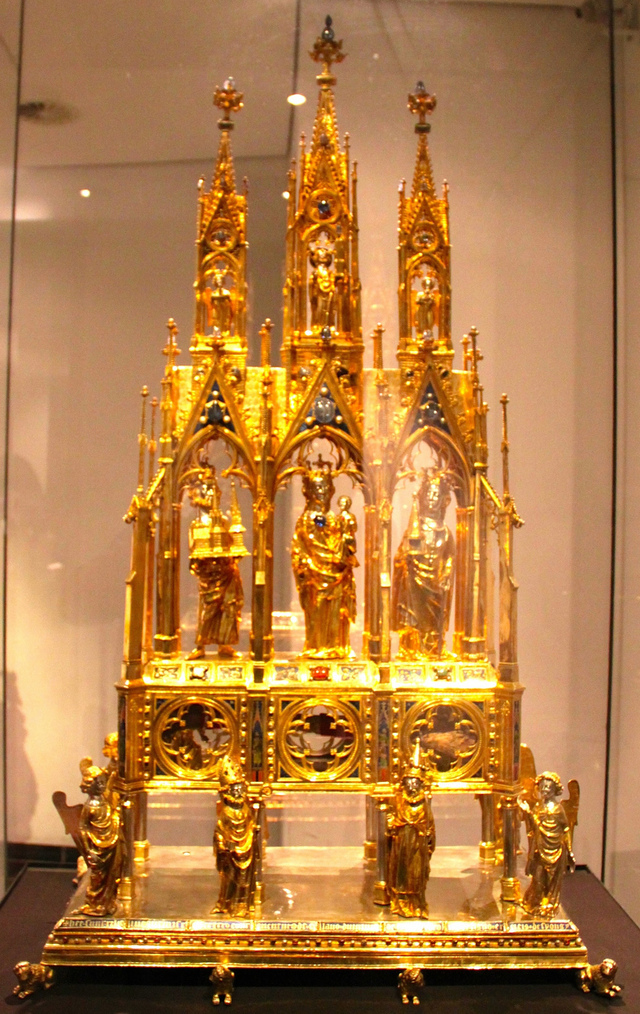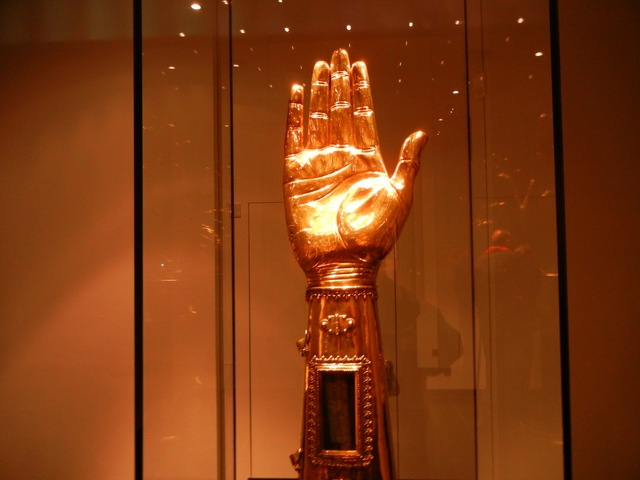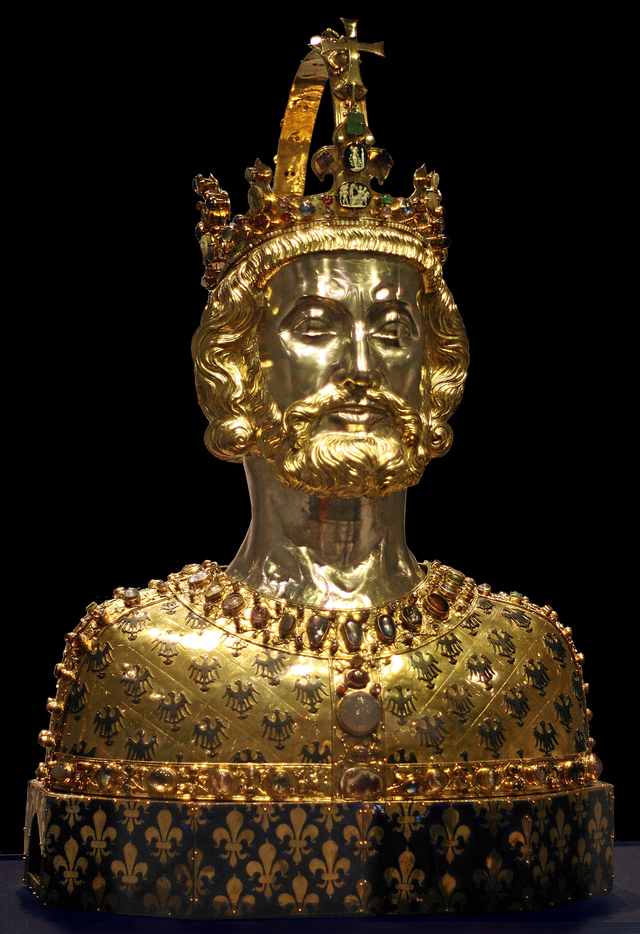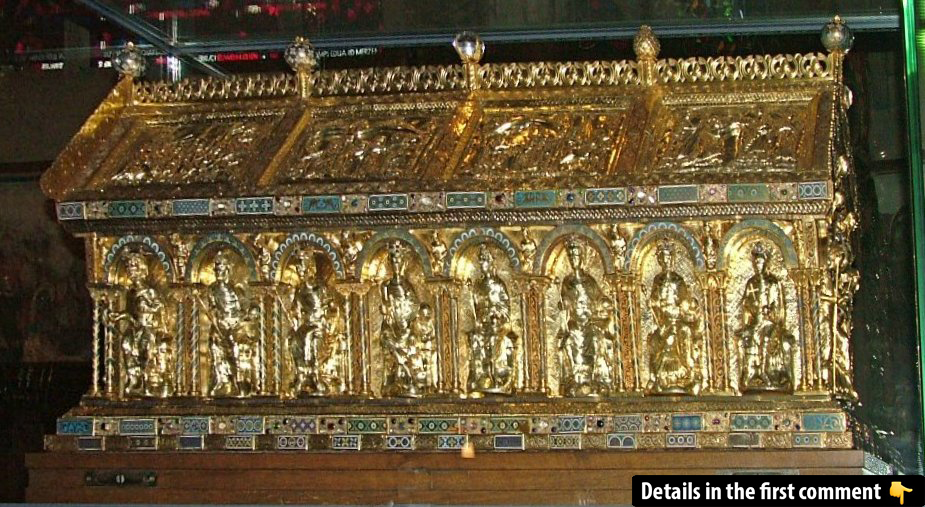Charlemagne, one of the most influential rulers in European history, is often remembered for uniting much of Western Europe. Yet, the journey of his remains—exhumed, studied, and reburied multiple times—has added layers to his remarkable legacy. Through modern scientific techniques, researchers have uncovered fascinating details about his life, confirming elements of his legendary stature. This article explores how Charlemagne’s bones, preserved over centuries, offer a rare and intimate glimpse into the physical reality behind the great emperor’s myth.
Charlemagne’s Death and Initial Burial
Charlemagne’s death on January 28, 814, marked the end of an era. Buried in the Palatine Chapel in Aachen, his final resting place became an iconic symbol of the Holy Roman Empire’s strength and influence. His tomb was located in the heart of his empire, signaling his importance to both the people and the religious institutions of the time.
Initial reports of Charlemagne’s burial painted a remarkable image: his uncorrupted body seated on a marble throne, crowned and holding a scepter, with open gospels in his lap. The details, recorded by contemporary chroniclers, created an almost mythical image of a king revered by his people. It was clear even in death, Charlemagne’s legacy was honored and celebrated.
Video
Watch the video to learn about Charlemagne, the powerful ruler who united much of Western Europe and shaped the future of the medieval world.
How Charlemagne’s Remains Were Handled Through the Centuries

Charlemagne’s remains did not rest quietly in their tomb for long. As centuries passed, various Holy Roman emperors sought to establish their own connections to the revered king by exhuming and displaying his remains as relics.
Otto III, in 1000, opened Charlemagne’s tomb and took portions of his remains, bringing them to Rome. This act of taking relics was not merely for religious devotion but also for political reasons. By connecting himself to the great king, Otto sought to legitimize his own rule. The tradition continued with Frederick I Barbarossa, who, in 1165, exhumed Charlemagne’s bones and displayed them at a festival in Aachen. This display was meant to reinforce the idea of Frederick’s connection to Charlemagne and to position Aachen as a place of pilgrimage and royal power.
Charlemagne’s bones were once again disturbed in 1215 by Frederick II, who had his remains exhumed and placed in an elaborate gold casket. This casket, along with other reliquaries, became a testament to Charlemagne’s enduring significance. The gold casket, enshrined in the Palatine Chapel, became a center of religious and political reverence.
The Rise of Reliquaries: Charlemagne’s Bones in Holy Relics

Charlemagne’s bones became part of a larger tradition of relic worship in medieval Europe. Throughout the Middle Ages, kings and emperors took part in the practice of gathering relics of saints and historical figures to demonstrate their power and legitimacy. Charlemagne, as one of Europe’s most revered monarchs, became an integral part of this tradition.

Over time, his bones were moved into various reliquaries, which were elaborate containers meant to preserve and honor the relics. Some of these included the Karlsschrein, a shrine commissioned by Frederick II, and numerous smaller reliquaries commissioned by later emperors like Charles IV and Louis XI. These reliquaries were not only a means of honoring Charlemagne’s memory but also a way for successive rulers to connect themselves to the divine right to rule.

Scientific Examination of Charlemagne’s Remains
It wasn’t until the 19th and 20th centuries that Charlemagne’s remains were subjected to modern scientific scrutiny. In 1861, Charlemagne’s skeleton was exhumed and reconstructed by scientists, who were tasked with studying the bones to better understand the physical characteristics of the king. This marked the beginning of a scientific investigation into the life and health of Charlemagne.

In 1988, the bones were exhumed once again, this time in a secret operation. Researchers studied the bones, examining them for signs of injuries, disease, and other physical traits. Their analysis produced some remarkable findings. They determined that Charlemagne was unusually tall for his time, standing at 1.84 meters (6 feet), which placed him in the 99th percentile for height in the 9th century. This matched descriptions of Charlemagne from the historical record, where he was described as having a commanding physical presence.
Charlemagne’s Physical Appearance: Matching the Historical Descriptions

The scientific study of Charlemagne’s bones revealed a striking resemblance to the descriptions provided by Einhard, his contemporary biographer. Charlemagne was described as large and strong, with a round head, large eyes, and a prominent nose. His posture was described as stately, and he was said to have had a firm and manly gait, which was consistent with the evidence found in his bones.
Further analysis revealed that Charlemagne had suffered from injuries in his later years, specifically a limp caused by a knee injury. Researchers found deposits on his kneecap and heel bone that matched descriptions of a limp that developed in his later years. These findings offer a fascinating glimpse into the life of one of history’s most legendary figures and provide physical evidence to support the narrative presented by his contemporaries.
Charlemagne’s Lasting Impact: A Symbol of Power and Legacy
Charlemagne’s legacy as the Father of Europe cannot be overstated. His efforts to unite much of Western Europe laid the foundations for the Holy Roman Empire, which would play a key role in European politics for centuries to come. His efforts to promote education, culture, and religion in his empire earned him a place as one of the most influential figures in medieval history.
Charlemagne’s bones, scattered across time and geography, are a reflection of the lasting impact he had on European society. His remains, studied and revered by emperors, kings, and scientists alike, continue to serve as a symbol of his enduring influence. The careful examination of his skeleton provides new insights into his physical characteristics and offers a more complete understanding of the man behind the legend.

Conclusion: Unveiling Charlemagne’s True Legacy Through His Remains
The story of Charlemagne’s bones is a fascinating journey through time, from their initial burial in Aachen to their modern-day examination by scientists. These remains have provided new insights into the physical life of Charlemagne, confirming many of the descriptions found in historical records. From his towering height to his limp in later years, the physical evidence matches the historical accounts and offers a glimpse into the life of one of Europe’s greatest rulers.
Charlemagne’s bones are not just a relic of the past but a living testament to his legacy. As historians and scientists continue to study his remains, they deepen our understanding of this iconic figure and the empire he built. Charlemagne’s influence continues to shape Europe today, and his remains serve as a powerful reminder of his enduring place in history.
Video
Check out the video to discover how Charlemagne’s empire fell. This historical breakdown reveals the causes behind the decline of one of Europe’s most powerful empires.



